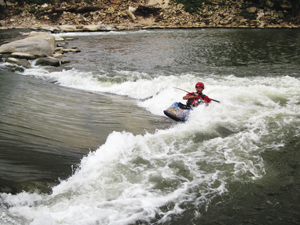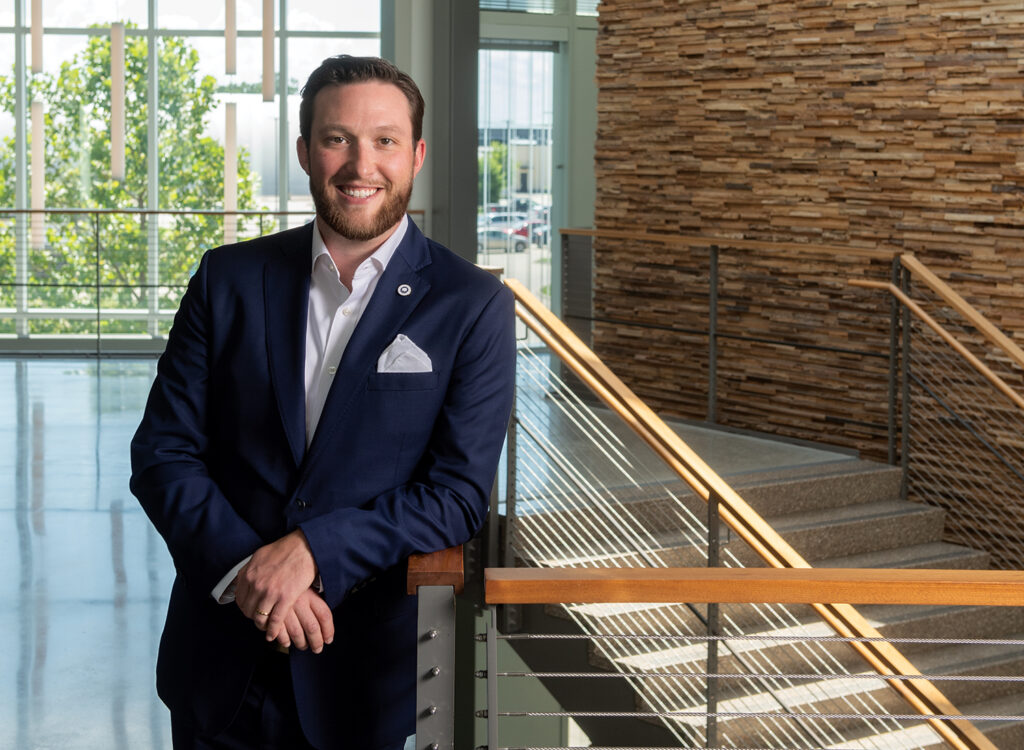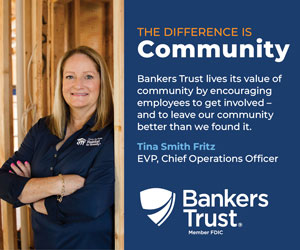Fun-fueled development
Leaders find recreation a key to attracting, keeping workers

PERRY BEEMAN Feb 19, 2016 | 12:00 pm
5 min read time
1,270 wordsBusiness Record Insider, Economic DevelopmentRecreation is turning into big business in Des Moines.
Talk to Hubbell Realty Co. President and CEO Rick Tollakson for more than five minutes — and mention waterways — and the newbie kayaker who heads a local water trails task force will tell you how important outdoor fun is to attracting and keeping residents here.
He’s even traveled to Manchester and Elkader to study the whitewater courses those small towns have constructed, pulling in thousands of recreation enthusiasts. There has been talk for decades about creating a whitewater course along the Des Moines River in downtown Des Moines to go along with the Principal Riverwalk.
Tollakson sees broad interest in leveraging natural resources to lure job candidates in a time of low unemployment and intense recruiting. Looking to the two rivers that meet in the heart of Des Moines as attractions is just a start.
“There is interest in learning how communities make rivers an amenity for workforce attraction,” Tollakson said.
Outdoor recreation is a $2 billion-plus business in Iowa, supporting more than 31,000 jobs, the Iowa Department of Natural Resources reported.
Iowa State University economist Catherine Kling studies the recreational value of rivers and other natural resources as part of her work at ISU’s Center for Agricultural and Rural Development, which she directs.
She said recreation can help economic development in several ways. For starters, the draw of recreational attractions brings spending, which supports jobs. “For example, the improvement of water quality or building of park facilities at a lake can bring more visitors and associated spending for food, fuel and sundries,” Kling said.
And, importantly, recreational perks give job prospects a reason to move to the area. “Employers understand that highly educated workers are mobile and are drawn to locations where they can experience a high quality of life,” Kling said. “Desirable outdoor amenities such as bike trails, high-quality lakes and streams can provide vibrant recreational opportunities that attract a high-quality workforce.
“Cities and communities with access to high-quality outdoor amenities routinely rank higher in quality of life indices than those without such attractions,” she added.
Those draws also often are cited by various rankings. In the past year, Gallup named Greater Des Moines the metropolitan area with the most community pride. SmartAsset called Des Moines the third-best city for new college graduates. And the American Institute for Economic Research ranked Des Moines the No. 6 midsize metro area where college graduates move for jobs.
Zac Voss gets that. He’s past president of the Des Moines Water Works Park Foundation. He and others are pushing a plan to revamp Water Works Park, which is bigger than New York City’s Central Park but is considered underused even after decades of chatter over how best to improve the space. The early part of the $45 million project plan crafted by RDG Planning & Design calls for a venue for small outdoor concerts, a new trail, revamped gardens and better access to Gray’s Lake next door.
There are more projects in the works around town and some that are expanding.
— Skateboard park. A $3.5 million skateboard park designed by California Skateparks that still awaits financing after roughly a decade of discussion.
— Paddle sports. Some community leaders are holding out hope that Des Moines will have a whitewater course for paddlers downtown. While discussions continue, the capital city has fallen behind Charles City, Elkader and Manchester, which already have courses. Iowa City, the state’s fifth-largest city, plans one. The Des Moines Area Metropolitan Planning Organization is performing a study for the Iowa Department of Natural Resources that looks at removing downtown dams and improving water trails across Central Iowa.
— Bike trails. The MPO says there are hundreds of street miles in Greater Des Moines feasible for bike lanes, and improvements to an already elaborate system of trails continue.
— Principal Riverwalk. The $70 million-plus project officially opened in January 2013 and has gained perks such as the Rotary Riverwalk Park’s fishing pole and bobber play apparatus since.
— Polk County continues work on Easter Lake and other recreational hot spots as part of a 20-year effort to spend as much as $50 million through bonds for work on parks, water quality, trails, education and related work. The county is considering a lodge at Easter Lake.
Economists at Iowa State University are finishing a five-year update of their work to tell the state Department of Natural Resources just how valuable lakes are to the local and statewide economies. They know, because you told them, that Iowans are willing to pay for better water quality, and therefore better recreation on lakes and streams. They know, because they did the study, that Gray’s Lake and Ames’ Ada Hayden Heritage Park are huge draws, with their small lakes and long trails.
“Studies of outdoor recreation overwhelming demonstrate that many people value access to high-quality lakes, streams and parks to relax, exercise, socialize and enjoy nature,” said ISU’s Kling. “The degree to which these activities are valued can be quantified by the amount of money that visitors would be willing to pay rather than do without access to these amenities. Local governments and groups that provide these amenities at low cost are enhancing the quality of life for local residents and visitors.”
Jay Byers, CEO of the Greater Des Moines Partnership, said outdoor fun is something prospective employees want and demand.
“Investing in recreational amenities is critically important to economic growth,” he said. “This community has really stepped forward in a big way to make investments to drive economic growth.”
Projects such as the overhaul of Gray’s Lake, the creation of the Principal Riverwalk, the continued expansion of a 700-mile area trail system and planned improvements to Water Works Park are central to retaining and keeping employees in the area, Byers said.
“If you look at philosophies for economic development, you look at taxes, transportation, the economic climate,” he said. Now, urbanists are also looking at investments in recreation, culture and the arts.
Greater Des Moines, with no mountains or oceans, is focusing on things like recreation and culture to attract workers, especially at a time when it is hard for many companies to find the workforce they need due to low unemployment and other factors, Byers said.
“We have a strong commitment to that, and it is one of the primary drivers of Des Moines leading all these great rankings,” he said, referring to national rankings that laud Des Moines for its business climate, attractiveness to millennials and as a place to raise a family.
“The economic reality is that you have to make those types of investments as a region to continue to attract and retain top talent,” Byers said. “It’s absolutely critical.”
Sometimes a small project makes a big difference
After Charles City opened Iowa’s first urban whitewater course in 2011, Elkader and Manchester got in the act. Elkader has a 22-foot spot where paddlers, using what they call “play boats,” go upstream into a wave to do tricks. Manchester has a more conventional series of drops that draws hundreds on a Fourth of July. The Des Moines Area Metropolitan Planning Organization organized a trip to Elkader and Manchester in August for Greater Des Moines leaders who learned about how the whitewater courses have drawn businesses and visitors.
Iowans seek outdoor fun
A survey by the Iowa Department of Natural Resources in 2012 found that:
89% of respondents like to walk for recreation
83% are into picnics or cooking out
56% drive for fun
52% like other family activities
49% enjoy swimming
46% like to fish
44% go birding near their home.









